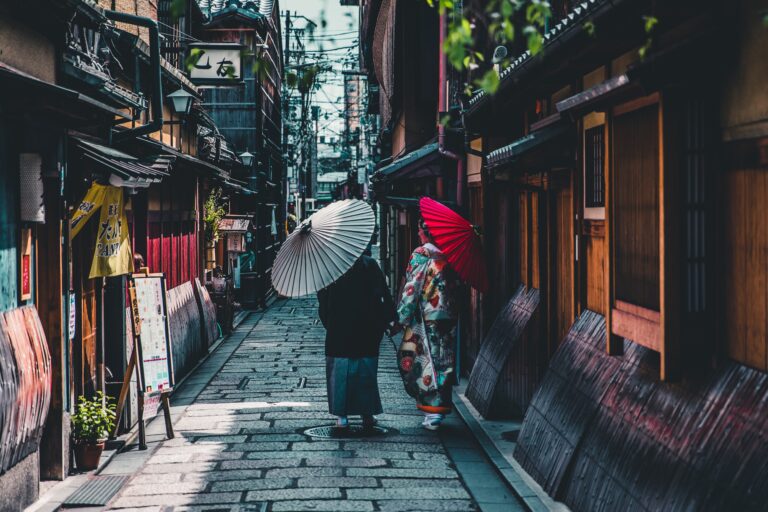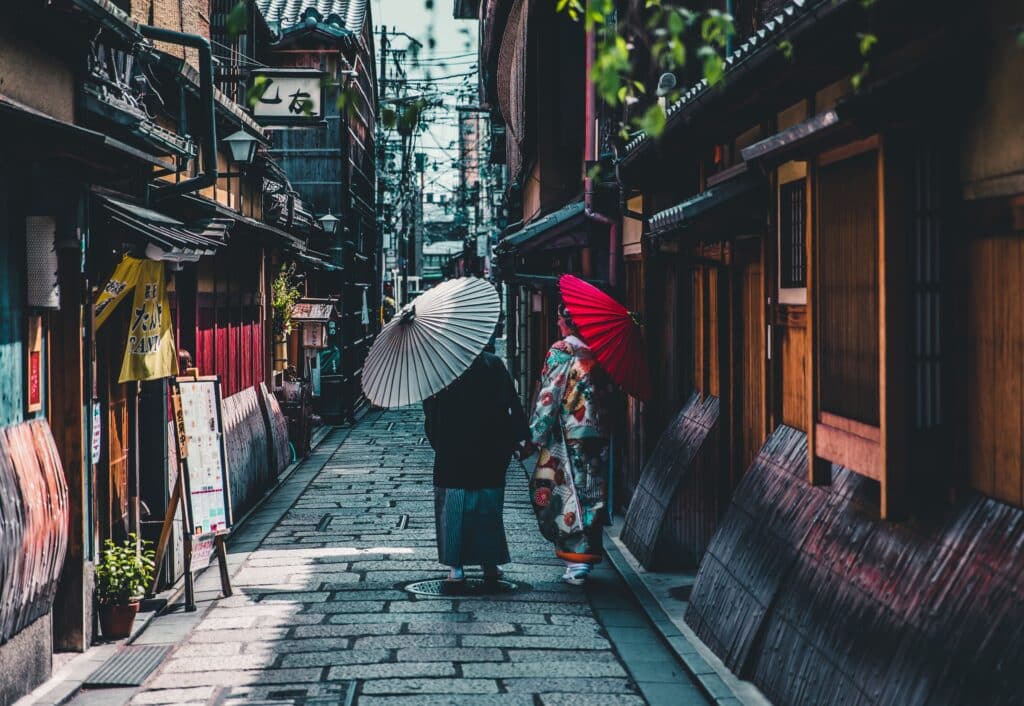
Whether you’re moving to Japan, studying abroad, taking a vacation, or planning a business trip, knowing some key Japanese culture facts will help you interact positively with everyone you meet.
In this Remitly guide, we’ll cover some of the things that you need to know about Japanese etiquette and social norms before you visit or relocate to the country.
Bowing: The art of greeting
Although no one is quite sure how the tradition started, bowing is essential to Japanese etiquette. Known as ojigi, bowing is a way to show respect. Let’s dig into Japanese customs surrounding bowing.
When do you bow?
In Japan, bowing can be a greeting and so much more. Some occasions when it’s appropriate to bow in Japanese culture include:
- Upon saying hello
- When saying goodbye
- At the beginning of a meeting, ceremony, or class
- When saying thanks or expressing appreciation
- When apologizing
- While saying congratulations
- After asking for something like a favor or a service
- As a sign of sympathy
- When you need to show respect
What are the types of bows?
There are three main types of bows in Japanese etiquette:
- Eshaku: A standing bow where you bend your body to around 15 degrees
- Keirei: A standing bow where you bend your body to around 30 degrees
- Saikeirei: A standing bow where you bend your body 45 to 70 degrees
How to bow correctly and respectfully
To bow correctly and respectfully, follow these tips.
Maintain good posture
Keep your feet planted on the floor and your toes pointed forward throughout your bow. Your spine should remain straight with the bending movement originating at your waist.
Keep your eyes down
For any of the traditional bows, your eyes should follow the direction of your face. Look down rather than gazing up at the other person.
Mind your hands
Men typically keep both hands at their sides when executing a bow. Women should place their hands on their abdomens, placing one hand on top of the other.
Take the occasion into account
Each of the three bows is suitable for different situations, and it’s important that you choose the right bow for the occasion.
The eshaku is a casual bow. You might use it when greeting a friend or to show courtesy to a stranger in a shop.
The most common business bow is the keirei. You might use it when greeting customers or beginning a meeting.
The saikeirei is the most formal of bows. As a result, it’s reserved for times when you need to show the utmost respect, such as when you’re thanking someone, apologizing, or making a request.
Consider social status
The other person’s social status is also important to consider when choosing what bow to perform. Social hierarchy is important in Japanese culture, and a person of lower status is generally expected to bow lower.
For example, you might choose the eshaku bow to greet peers in a classroom but would then perform a keirei bow for your professor. If you met the university’s president, you would likely greet them with a saikeirei bow.
Similarly, the eshaku bow might be acceptable for saying hello to a coworker on a Monday morning, but when you greet your boss, you would default to the keirei. If you got into the elevator with the CEO, you might choose the saikeirei bow to show respect.
What about handshakes?
In business, Japanese people often offer a handshake instead of a bow to Westerners, so be prepared to shake hands at the start of a meeting.
Business people may perform a bow after a handshake or opt just to shake hands. Follow the lead of the person you’re meeting with to make a good impression.
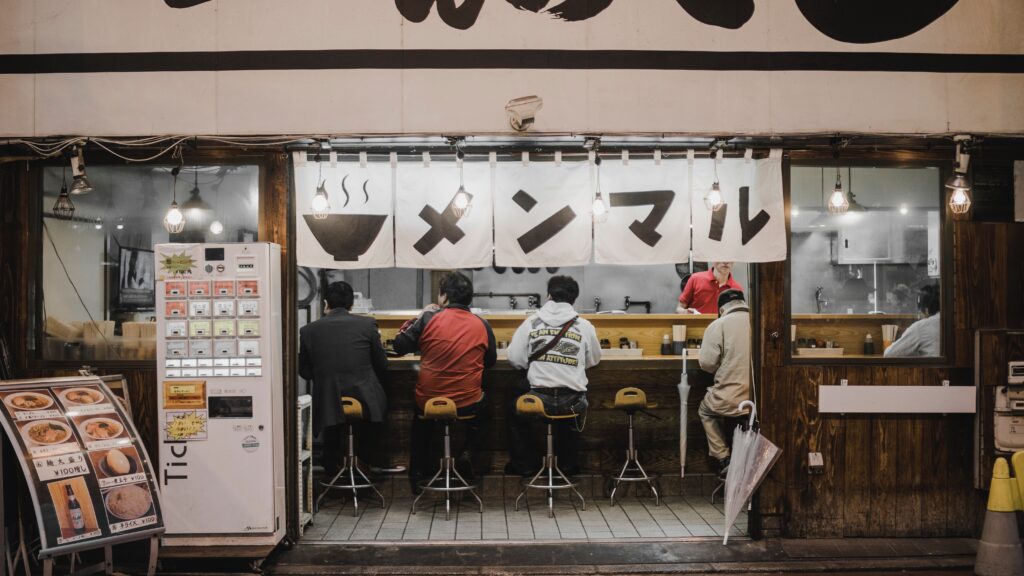
Dining etiquette: Savoring Japanese cuisine
One of the best things about visiting Japan is enjoying delicious regional cuisine. While savoring new dishes like sushi and yakitori, keep the following tips about Japanese food culture etiquette in mind.
Remove your shoes
When you enter a Japanese restaurant, look for a tatami mat near the door. If you see one, that’s a sign that you should remove your shoes before entering.
If you’re invited to eat at someone’s home, always remove your shoes by the door to follow Japanese manners.
Posture
In major cities, you’ll find restaurants with tables and chairs for seating, but in homes and other dining establishments, you may be expected to sit on the floor.
The traditional formal seated posture for dining is the seiza. To get in this position, kneel so that you’re sitting on your legs and cross your feet behind you. In casual settings, men can sit cross-legged on the floor, but this posture isn’t appropriate for women.
Chopsticks
If you’re moving to Japan or planning a trip, practice using chopsticks before you go so that you’re ready to eat everything from sushi to noodles to rice.
As you eat, avoid pointing at people or things with your chopsticks. If someone asks you to pass something, present the plate or platter rather than pick it up with your chopsticks.
When you need to set your chopsticks down, align them parallel to each other and place them on your plate.
Showing gratitude
Say “gochisousama” after you finish dining to show your appreciation for a meal. This word translates to “It was a feast” and signifies respect.
Other table manners
If you’re presented with a warm, damp towel before or after the meal, only use it to wipe your hands. You should never touch the towel to your face.
Unlike in the West, slurping soup is a part of Japanese customs. It shows that you’re enjoying the soup and eager to eat more.
If you wish to add soy sauce to your food, place it in the small bowls on the table and then dip. Don’t pour the soy sauce directly onto your food.
Paying for a meal
If you’re at a restaurant, do not place anything other than cash or your credit card on the tray the server provides. Pass the tray with both hands.
Tipping is rare in Japan. Many people consider it rude, so don’t leave money for your server at the end of the meal.
Business etiquette: Making a great impression
Making a good impression in the workplace can positively impact your career. Follow these Japanese etiquette tips for business to send the right message to coworkers, supervisors, and clients.
Carry business cards
Exchanging business cards is an expected practice when meeting someone for the first time. After you bow or shake hands, present your card, handing it to the other person with both hands. When they offer you their card, accept it with both hands.
Use last names
When you meet a Japanese person, they will say their surname first and their given name second. If you address them directly or talk about them to someone else, use their last name with the honorific -san at the end to show respect.
For example, if you meet someone named Teruo Okura, refer to them as Teruro-san.
Remain polite at all times
When conversing with someone, speak in a quiet voice. Avoid gesturing too much with your hands. Keep them folded on the table or in your lap.
Read the next section on communication to learn more about talking to people politely in Japan.
Be on time
Punctuality is important in Japanese customs and traditions. Because being late may be interpreted as a sign of disrespect, plan to arrive at meetings and your work shift early.
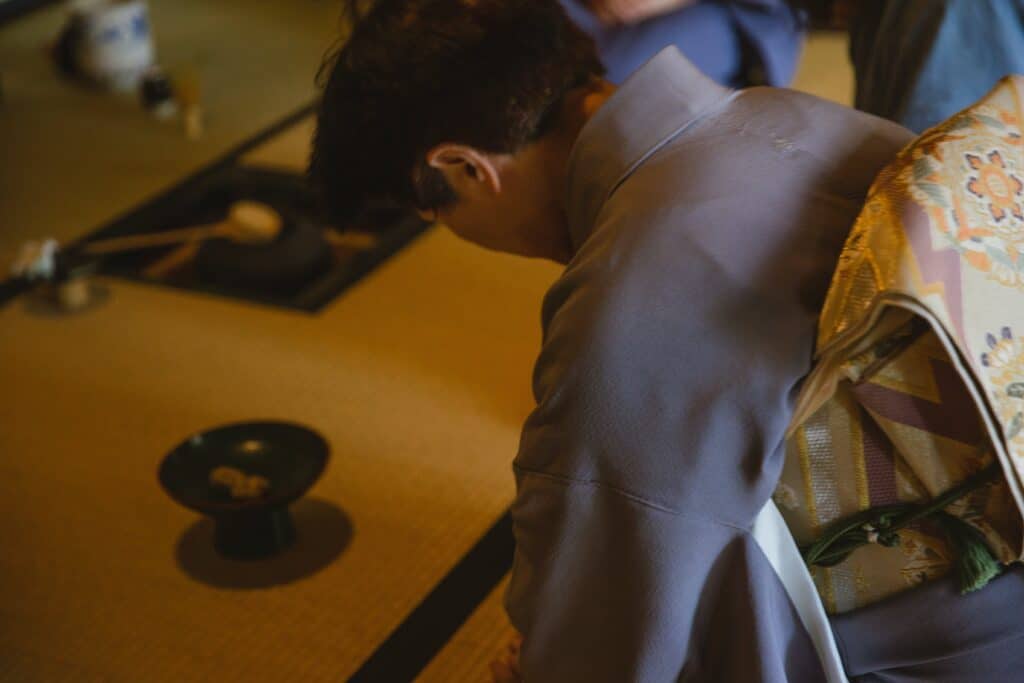
Communication: Speaking and listening
The art of conversation in Japan has its own rules. When talking with someone, keep the following Japanese customs in mind.
Use honorifics
Honorifics are suffixes you add to a person’s name as a sign of respect. You should choose honorifics based on a person’s social status as follows:
- San: The equivalent of Mr. or Mrs, appropriate for people of equal status to you
- Sama: The equivalent of Sir or Madam, appropriate for people of higher status like customers or supervisors
- Chan: An honorific for children
- Tan: An honorific for babies
- Senpai: An honorific for someone with senior status, like an older student or a senior colleague who isn’t your supervisor
- Sensei: Honorific for teachers
- Hakase: Honorific for doctors and people who hold degrees
According to Japanese manners, prolonged eye contact is rude.
Try not to make eye contact when talking to someone of a higher social status. Short periods of direct eye contact followed by short breaks are acceptable during casual conversation.
While avoiding prolonged eye contact, be sure not to stare blankly at something else. During Japanese conversation, your eyes should move around, occasionally pausing on the speaker and looking around the rest of the room.
Gestures and volume of speaking
Keep hand gestures to a minimum during a conversation. If you need to identify something or someone, gesture with your whole hand. Never point, as that’s considered rude in Japanese culture.
Don’t touch other people when you speak to them unless it is a close family member. Even a gesture like placing your hand on someone’s shoulder to get their attention may come off as rude.
Generally, Japanese people speak in soft voices when carrying on a conversation. Be mindful of the volume of conversation and adjust yours accordingly.
Facial expressions
Using proper facial expressions when carrying on a conversation is important in Japan.
While smiling is considered the norm during a conversation in the West, it can actually be a sign of embarrassment in Japan. As a result, It’s better to try to maintain a neutral expression with just a slight smile when talking with someone.
Laughter
Laughing is generally not appropriate in business settings, but feel free to laugh in casual conversations. Women typically cover their mouths when they laugh in Japan, but men don’t always follow this Japanese etiquette.
Back-channeling
When you’re speaking to someone, back-channeling is a way of letting the other person know that you’re listening and engaged, and it’s an important part of being a good conversation partner in Japan.
If you’re carrying on a conversation in English, you can backchannel by saying things like “okay,” “yeah,” “hmmm,” “I see,” and “uh-huh.”
In Japan, back-channeling is known as aizuchi. Here are some phrases that you can incorporate when speaking in Japanese:
- Hontou? / hontou ni?: Really?
- E! / A!: An exclamatory sound like a gasp or oh
- Naruhodo: I see
- Tashika ni: That’s right, or certainly
- ii desu ne / ii ne: That’s nice
Taboo topics
To avoid causing embarrassment or conflict, avoid taboo topics when talking with Japanese people. These include:
- Income or how much money someone makes
- What someone studied in college, or if they went to college
- Politics
- The Japanese royal family
- Religion
Gift-Giving: Exchanging presents with grace
Gift-giving is an essential part of Japanese traditions. Understanding when and how to give gifts can help you show appreciation and ensure you’re prepared to accept gifts politely.
When do you give gifts in Japan?
The following are times that it’s customary to give gifts in Japan.
- When you return from a trip: If you take a vacation while living in Japan, you are expected to return with souvenirs or omiyage for family, friends, and even coworkers.
- When you visit someone: If you’re invited to someone’s home, bring a host or hostess gift called a temiyage.
- When someone does you a favor: If someone does something special for you, you can present them with a small gift called an okaeshi.
- In the summer: During the summer months, friends, family, and coworkers exchange small gifts called ochugen.
- In December: These Japanese give small gifts called oseibo to friends, family, and coworkers during the month of December.
- Birthdays: Giving birthday gifts is not traditionally a part of Japanese culture, but it has become a common practice in recent years.
- Christmas: As with birthday gifts, Christmas gifts have gained popularity over the last couple of decades, but not everyone exchanges them.
- Weddings: A monetary gift called a goshugi is customary to bring to a wedding.
What are appropriate gift choices?
What gifts are appropriate to give someone according to Japanese social norms depends on the occasion as follows:
- Omiyage: Usually small, inexpensive souvenirs that have the name of the place you visited on them
- Temiyage: Edible things like chocolates, candies and wine
- Okaeshi: Alcohol, household items, and sweets
- Ochugen: Foods and drinks that are pleasant to enjoy in the summer
- Oseibo: Food, alcohol, and household items usually costing no more than 5,000 yen
When giving monetary gifts in Japan, avoid totals that contain the number two or are divisible by two, as this number is considered bad luck. For example, giving someone 30,000 or 50,000 yen rather than 20,000 or 40,000 yen for a wedding is better.
How do you wrap and present gifts?
In Japan, a gift’s appearance is as important as what’s inside. To make a good impression, wrap your gift in furoshiki, a decorative fabric wrapping. Monetary gifts should be presented in an attractive envelope.
When you hand someone a gift, always use both hands.
How do you accept gifts?
If someone offers you a gift, accept it with both hands. Then, bow to show your thanks.
Typically, Japanese people wait until they’re in private to open gifts, so avoid opening the gift immediately. Instead, put it aside for later. The exception is at weddings, where it’s customary to open the envelopes immediately.
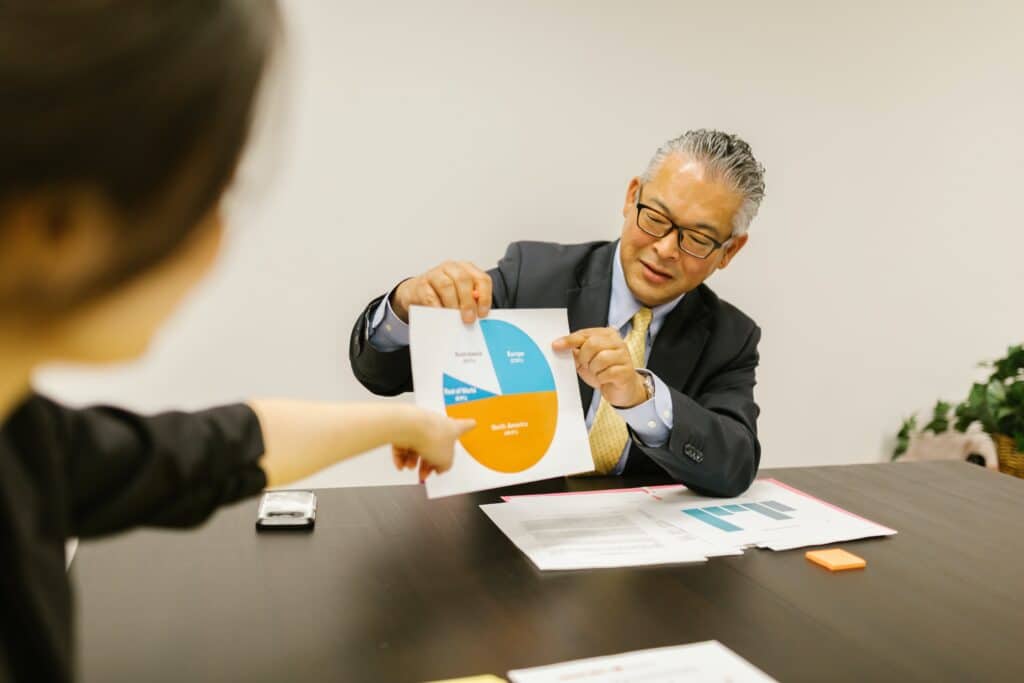
Personal appearance helps you make a good impression virtually everywhere in the world, and in Japan, there are customs and norms regarding how you dress for various occasions. Let’s dig into the proper attire for different social situations.
Business attire
In Japanese culture, the suit is the acceptable traditional business attire. Women can wear skirts or trousers but should always have a blazer to match.
Color selection is important when choosing business attire. Generally, acceptable colors are dark neutrals like black, gray, or navy. Men’s neckties should also be limited to these colors.
Some Japanese workplaces do have a business casual dress code every day or on certain days of the week.
Business casual for men usually consists of a sports coat or blazer and trousers without a tie. For women, the norm is a shirt under a cardigan or blazer paired with a knee-length skirt or trousers.
Funeral attire
If you need to attend a Japanese funeral, dressing appropriately will show your respect for the deceased and their loved ones.
For men, the appropriate attire is a black suit with a black tie, black shoes, and a black belt with a matte buckle.
Women should wear a black dress or a black knee-length skirt and top. Whatever women wear should completely cover their shoulders and have a modest neckline.
Outside of wedding rings, jewelry should not be worn at a funeral.
Traditional costumes
The kimono is the most common traditional outfit for both men and women in Japan. You may need to wear one if you’re invited to a tea ceremony or a traditional Shinto wedding.
An alternative to the kimono is the yukata. It’s considered a summertime garment and typically only worn for festivals in modern Japan.
Makeup
For women, makeup is generally part of the daily dress code in Japan. Many people see not wearing makeup as rude and unhygienic.
Japanese women don’t usually wear nail polish or apply fake nails, but students sometimes do.
Master Japanese customs and norms
Japanese culture can be traced back to 12,000 BCE, and throughout the centuries, the country has developed a culture unlike any other. As a result, Japanese traditions and etiquette are rich and unique.
Keeping all of the above facts about Japanese culture in mind can set the stage for positive social interactions while you’re visiting Japan or adjusting to life there following an international move.
Still, there may be times when you accidentally step outside of Japanese social norms, even when you’re well prepared and putting forth your best effort. If you make a mistake, don’t panic. Simply give a heartfelt apology and explain that you’re still learning about Japanese manners.
Omotenashi, or hospitality culture, is important in Japan, so you’ll find that most people will be forgiving and understanding. View mistakes as a chance to learn more about Japanese culture and traditions and move forward.
By keeping an open mind and doing your best to follow Japanese customs and norms, you can have a positive experience abroad and open the doors to new friendships and business relationships.
Review Japanese customs when planning a trip or relocation to Japan. Also, download the Remitly app to send money home easily while abroad.
